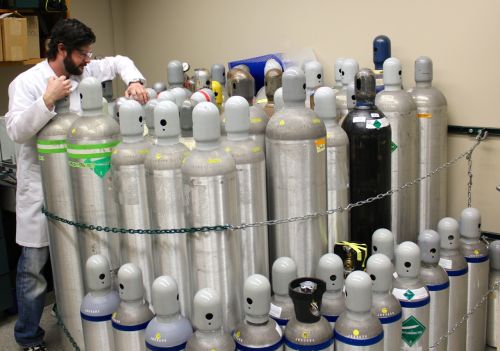
The reliable calibration of the O2 record over many decades is vital to the integrity of the O2 research program. We insure this calibration by preparing and analyzing a formidable suite of calibration (cal) gases, contained in aluminum or steel tanks at our facility.
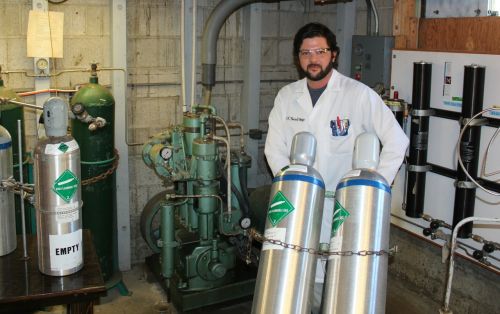
The first step in preparing a cal gas is to fill an empty cylinder with unpolluted marine background air collected in our pumping facility at Scripps (figure 14). We will follow cylinder #ND 201401, who we’ll call Frank.
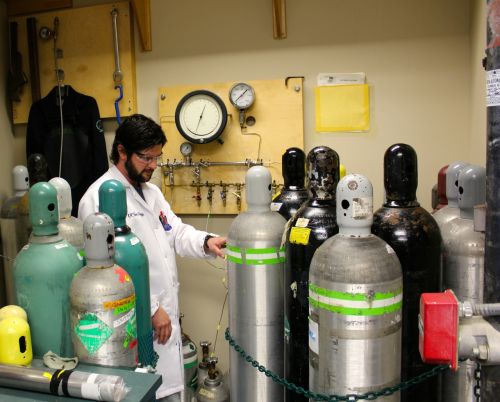
After pumping Frank full of air we transport him to our lab where we adjust the levels of O2 and other gases by adding gas mixtures via a customized mixing apparatus.
After mixing and fine tuning his O2 concentration, we rest Frank horizontally for a period of several days to ensure that he is completely mixed.
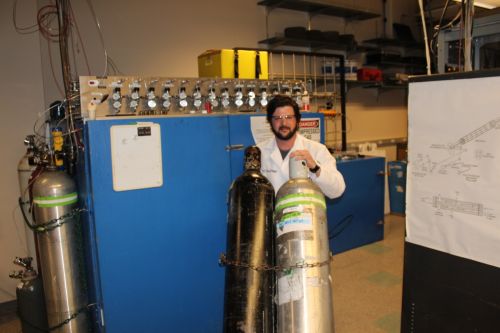
Before we measure Frank against air flasks he must be calibrated against other cal gases to find his place on the Keeling O2 calibration scale. This is accomplished by loading Frank into the “Blue Box”, a large insulated container where Frank and the other gases rest horizontally to avoid having the effects of gravity “unmix” the cylinders.
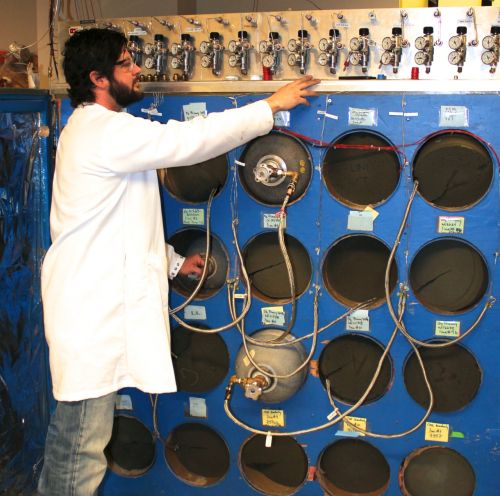
After we repeatedly measure Frank against a suite of cal gases over several months, he will be properly groomed and ready to meet Aerial and the other flasks. Some of Frank’s companions were filled as long ago as the mid 1980s, providing long-term benchmarks for O2 concentration.
